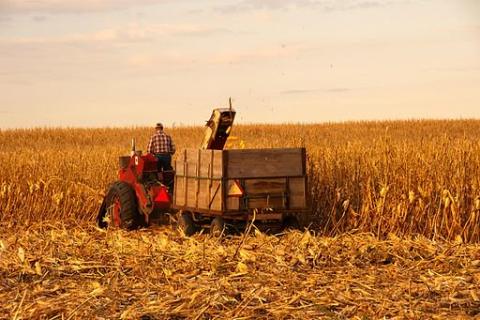The 2016 presidential election may be three years away, but Iowa is already abuzz with potential Republican candidates.
As soon as the dust settled from Mitt Romney’s failed bid to unseat President Barack Obama, Senator Ted Cruz of Texas, Governor Bobby Jindal of Louisiana, former Senator Rick Santorum of Pennsylvania, and Governor Scott Walker of Wisconsin all began making regular pilgrimages to the Hawkeye state. Iowa, the first battleground state of the presidential primary, will hold their caucus in January 2016, making it the first test for any White House hopeful.
Iowa has held caucuses to participate in the presidential election since the 1800s. At the time, there was no technology to coordinate a statewide election and easily calculate the results; so Iowa (and all other states at this time) had very small meetings in every precinct — at schools , churches, or community centers — where voters gathered to decide on a representative who supported their candidate at a larger statewide convention.
Especially in the nineteenth century, these caucuses were dominated by political insiders who met in secret to choose their candidates before presenting them to the public.
Today, the caucuses in Iowa are no longer controlled by men in smoke filled rooms, but as vestiges of this bygone era, they remain a mystery to most people around the United States.
How Do Caucuses Work?
In Iowa, primary election voters who are registered as either a Democrat or Republican still gather every four years to discuss their party’s candidate.
Each Iowa caucus is still broken down by precinct, of which there are about 2,000 in the Midwestern state. At a Republican caucus, one party member comes in, votes through a secret ballot, and the percentage of the group supporting each candidate will decide who wins that precinct and sends a delegate to the county convention to advocate for their candidate.
The Democrats, however, have a more complex system in place. Democrats have a chance in each precinct to make the case for their candidate. Following the discussion, supporters gather in into groups for their candidate. In order to be viable, they must have a certain percentage of all caucus goers.
If they do not meet that particular threshold, the group disbands and members are allowed to join groups for another candidate. The end result is determined by how many delegates that precinct has.
The breakdown is as follows:
- If the precinct has only one delegate, the group with the most people wins the delegate to send to the county committee
- If the precinct has only two delegates, each group needs 25 percent to be viable.
- If the precinct has only three delegates, each group needs one-sixth of the caucus participants.
- If the precinct has four or more delegates, each group needs at least 15 percent of the caucus participants.
The media reports the winner of the Iowa democratic caucus based on the percentage of delegates received by each candidate.
This process can take hours — voters cannot just enter vote and leave — and therefore the meetings tend to be dominated by only the most dedicated party core.
What Can Go Wrong?
The caucuses are meant to allow for an open, participatory, and democratic election, but unfortunately, this system also leads to multiple problems.
23 percent of registered Republicans, while in a typical year only 80,000 to 120,000 even attend -- about 13 to 19 percent).First, only a small portion of the Iowan population -- currently around 3 million -- ever attends these caucuses. On the GOP side, for example, turnout has never exceeded
The Democratic numbers closely mirror the Republicans. In 2000 and 2008, though, Iowa caucus turnout was less than 10 percent of the vote that the Republican nominee won in the general election, indicating that voters do not participate in the more confusing primary system to choose their candidate, but are readily interested in the democratic process.
Second, the system is more easily dominated by the party bosses. Most states in the U.S. used to utilize caucuses, but eventually replaced them as technology improved.
In the 1970s, many states began to shift over to the primary elections we see across the country today which were viewed as providing the individual voter more influence and autonomy. Reforms were designed to encourage broader participation in picking presidential candidates.
The paper ballots that are utilized by the caucus system are also seen as a major drawback. In the 2012 Republican caucus, there was a great deal of dispute over the winner of the Iowa caucus which shrouded Romney’s small margin of victory in doubt against a possible win for Santorum.
There are no recounts in the election. With all the technology available today to improve reporting and voting possibilities, many people criticize the archaic system.
Independent voters are also marginalized by this system. While they can show up and register with a party the night of a caucus, they are otherwise unable to participate in the primary election. Therefore, many are excluded from the process, which is funded by public money and allows participation toward electing their representatives.
As the first state to vote on presidential candidates, Iowa has long played an outsized role in the national presidential election. While they point to front runners and provide momentum to their campaigns, the candidates ultimately place an enormous amount of emphasis and money into the state where, in the 2008 Republican caucus, only 119,188 people participated, which equated to 20 percent of Iowa’s registered Republicans, 4 percent of the state’s entire population, and .04 percent of the total U.S. population.
If nothing else, these numbers beg for a careful reflection on the role and process these primaries play on the U.S. national political scene.
